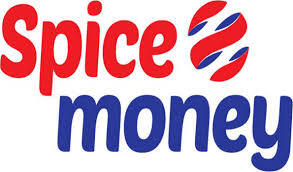In many rural areas, accessing banking services remains a challenge due to the lack of physical bank branches. To bridge this gap, Bank Grahak Seva Kendra plays a crucial role in offering financial services through a kiosk for banking. These centers empower rural communities by providing essential banking services, ensuring financial inclusion, and reducing dependency on urban banking institutions.

A Bank Grahak Seva Kendra acts as a mini banking outlet that allows customers to access financial services such as cash withdrawals, deposits, money transfers, and account inquiries. These kiosks for banking are particularly beneficial for people who have limited access to banking infrastructure, making transactions seamless and convenient.
The Role of Grahak Seva Kendra in Rural Banking
1. Bridging the Financial Gap
Financial inclusion remains a significant challenge in rural areas. With limited banking facilities, many individuals struggle to manage their financial transactions. Grahak Seva Kendras bring banking services closer to rural populations, enabling them to perform essential transactions without traveling long distances.
2. Kiosk for Banking: Simplifying Transactions
The introduction of the kiosk for banking model has transformed rural banking by providing secure, user-friendly, and accessible financial services. These kiosks allow customers to conduct banking operations using biometric authentication, ensuring security and ease of use for individuals unfamiliar with digital banking.
3. Financial Literacy and Digital Awareness
A key challenge in rural banking is the lack of financial literacy. Grahak Seva Kendras help educate customers about savings, digital transactions, and financial management. By doing so, they promote a culture of informed banking decisions and responsible money management.
4. Convenience and Accessibility
Since rural areas often lack ATM facilities or full-fledged bank branches, Grahak Seva Kendras act as an accessible alternative. These centers provide services such as cash deposits, withdrawals, balance inquiries, fund transfers, and even bill payments. The ease of access encourages more people to participate in banking, strengthening the financial ecosystem.
Services Offered by Grahak Seva Kendra
Grahak Seva Kendras provide a wide range of banking services, making them a crucial part of rural financial infrastructure.
1. Cash Deposits and Withdrawals
Customers can deposit or withdraw money from their accounts through these kiosks, reducing the need for traveling to distant bank branches.
2. Money Transfers
Grahak Seva Kendras facilitate seamless domestic money transfers, allowing customers to send and receive funds conveniently.
3. Account Balance Inquiry
Users can check their account balance and get mini statements, ensuring better financial tracking.
4. Loan and Credit Services
Some centers also assist customers with loan applications and credit-related services, helping them access financial aid when needed.
5. Bill Payments and Recharges
Customers can pay utility bills, recharge mobile phones, and conduct other essential financial transactions.
6. Aadhaar and Biometric Authentication Services
Many kiosks support Aadhaar-based transactions, ensuring secure and authenticated banking experiences.
Benefits of Grahak Seva Kendra
The establishment of Grahak Seva Kendras has significantly impacted rural banking, offering numerous benefits:
1. Enhanced Financial Inclusion
By extending banking services to remote areas, these centers empower the unbanked population, promoting financial stability.
2. Reduced Dependence on Urban Banks
Rural residents no longer need to travel long distances to access banking services, saving time and money.
3. Secure Transactions
With biometric authentication and Aadhaar-based transactions, security risks are minimized, ensuring safe banking practices.
4. Employment Opportunities
Local entrepreneurs operate these kiosks, creating job opportunities within rural communities and boosting local economies.
Challenges Faced by Grahak Seva Kendra
Despite its advantages, there are challenges that Grahak Seva Kendras must overcome:
1. Limited Awareness
Many rural customers are unaware of these services, leading to underutilization of the facilities.
2. Connectivity Issues
Rural areas often face internet connectivity problems, affecting real-time transactions.
3. Security Concerns
While biometric authentication helps, ensuring data security remains a concern, requiring continuous improvements.
4. Operational Costs
Maintaining a kiosk and keeping it operational incurs costs, which can be a challenge for small operators.
Future of Grahak Seva Kendra
The future of Bank Grahak Seva Kendra looks promising as technological advancements continue to shape rural banking. Digital literacy programs, improved connectivity, and government initiatives supporting financial inclusion will further strengthen their role. As more people adopt digital banking, these kiosks will play a vital role in ensuring smooth transactions for rural populations.
Conclusion
Bank Grahak Seva Kendra is a revolutionary step in bridging the financial gap in rural areas. By providing banking services through a kiosk for banking, these centers enhance accessibility, promote financial literacy, and support economic development. As digital banking continues to evolve, Grahak Seva Kendras will remain crucial in empowering rural communities, ensuring that financial services reach every corner of the country.